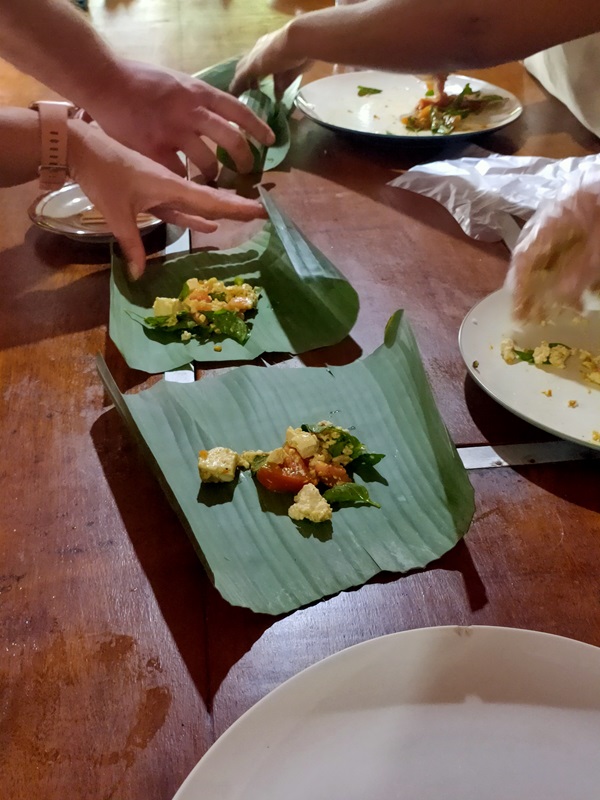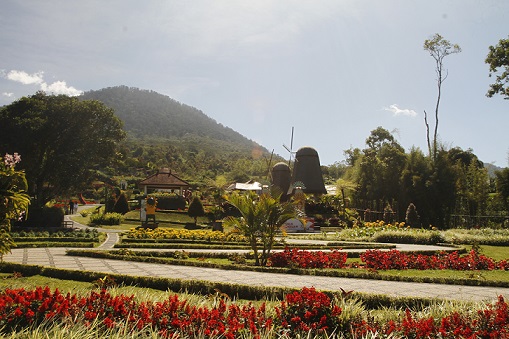Stepping into a Balinese village is like entering a world where life slows down, and everything has meaning. The scent of spices hangs in the air, and the kitchen is the heart of it all. In Bali, food isn’t just something we eat; it’s how we bring people together. Growing up here, I’ve learned that cooking is more than a daily task—it’s a way to pass down traditions, bond with family, and share stories.

Today, I want to take you into that world, to show you how cooking in Bali goes far beyond recipes and measurements. You’ll learn how to make dishes like Lawar and Sate Lilit, but more importantly, you’ll understand why we cook the way we do. In this village, cooking is a way to connect, not only with the ingredients but with the people around you.
Stepping Into a Balinese Home
The kitchen is the heart of every home in Bali. It’s where family members gather to prepare meals, but also to talk, laugh, and share stories. When you walk into a Balinese kitchen, you’ll notice that it’s not filled with modern gadgets. Instead, we use traditional tools like the lesung (mortar) and ulekan (pestle) to grind spices by hand. It’s a process that takes time, but there’s a reason for that. We believe that the flavors develop better when you take your time.
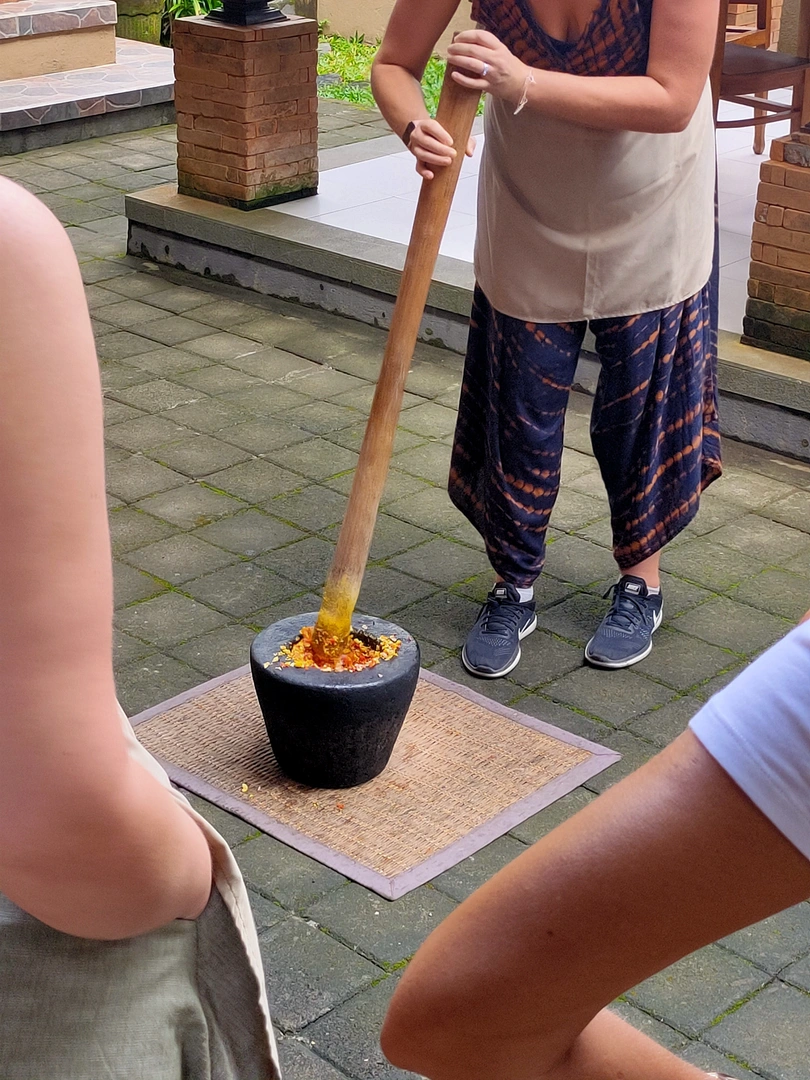
Before we even begin cooking, the day starts with a trip to the local market. It’s not just about buying ingredients—it’s about engaging with the community. We greet the vendors, ask about the freshest produce, and take our time selecting the best ingredients. This is an essential part of the cooking experience, because fresh, local ingredients are the key to making authentic Balinese food.
Cooking with Purpose: More Than Just Food
Balinese cooking is about more than just feeding ourselves—it’s about bringing people together. One of the dishes we often prepare during special occasions is Lawar. It’s a mix of vegetables, grated coconut, and minced meat, all flavored with freshly ground spices. Lawar is often made for family gatherings, temple ceremonies, or community festivals. It’s the kind of dish that everyone looks forward to because it’s not just delicious; it’s also a symbol of celebration.
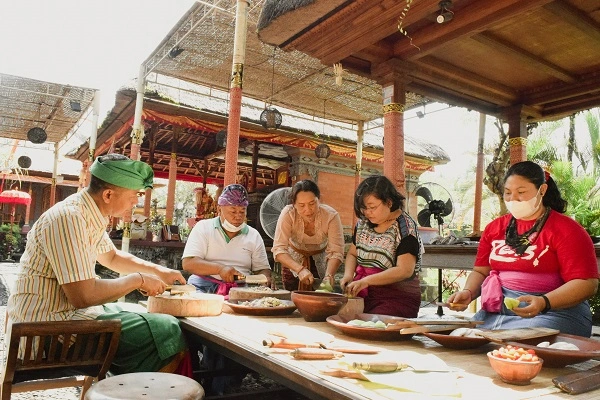
To make Lawar, we start by preparing the bumbu Bali, a spice paste that forms the base of many Balinese dishes. We grind fresh turmeric, garlic, shallots, and chilies together, creating a fragrant blend that brings warmth and depth to the dish. Once the spices are ready, we mix them with minced pork or chicken and grated coconut. The final touch is a squeeze of lime, which balances out the rich flavors and gives the dish a refreshing lift.
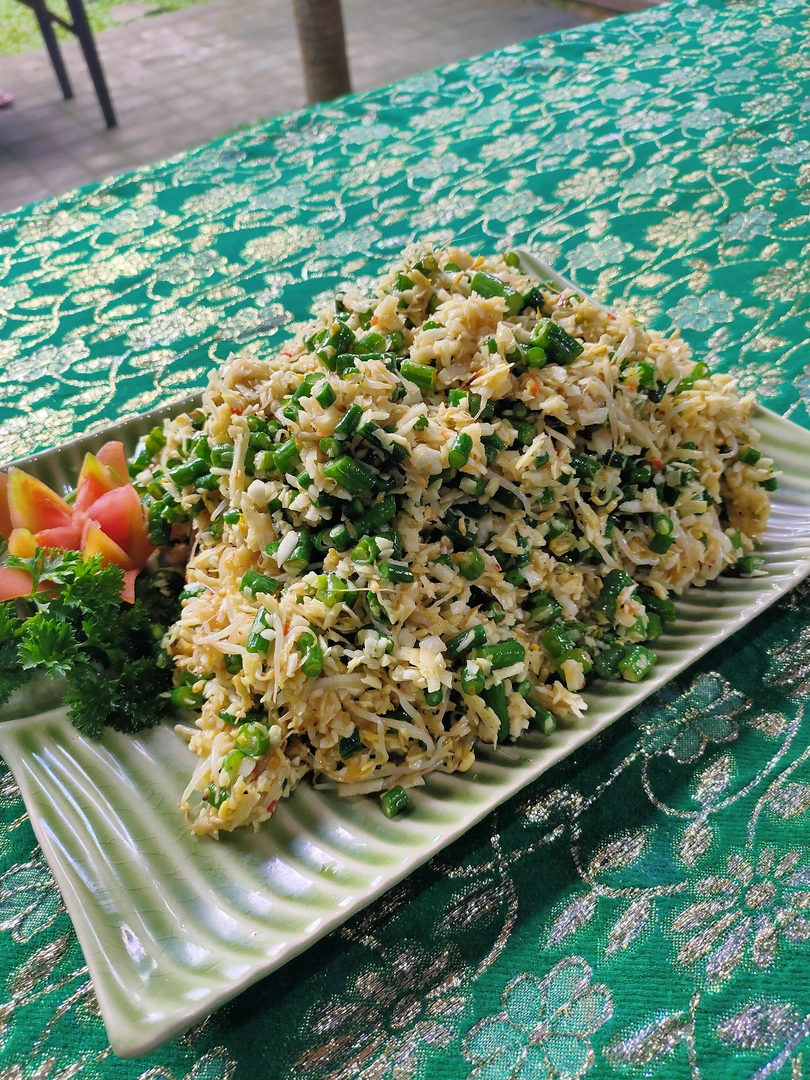
Another favorite dish is Sate Lilit, a type of satay made from minced fish or chicken. The meat is mixed with grated coconut and lime leaves, then wrapped around bamboo sticks before being grilled over an open flame. The smell of Sate Lilit cooking is enough to make anyone hungry—it’s smoky, savory, and has just the right amount of spice.
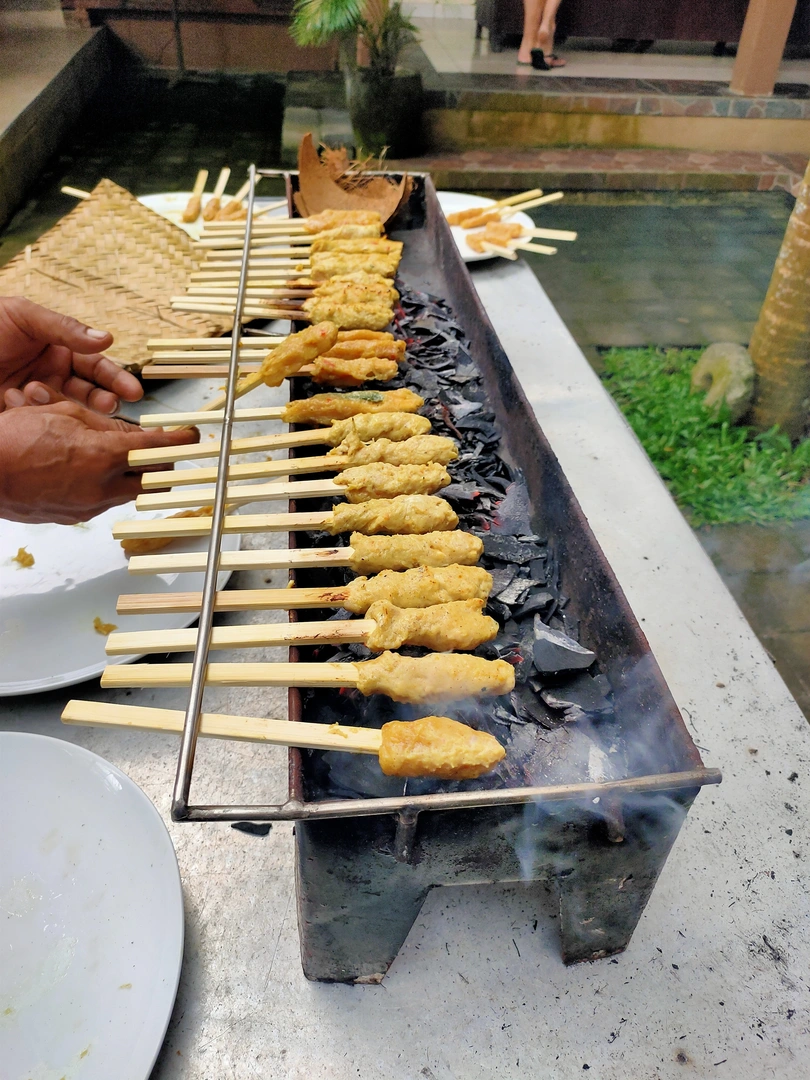
From Market to Table: A Journey
In Bali, cooking is a journey that starts long before the food reaches the table. It begins in the market, where we carefully select the freshest ingredients. Once we’re back in the kitchen, the real work begins. We don’t rush through the process. Instead, we take our time to prepare each element of the dish with care. Whether it’s grinding spices, chopping vegetables, or grilling the meat, every step is done with purpose.
One of the things you’ll notice when you cook in Bali is that nothing is wasted. Every part of the ingredient is used in some way, whether it’s for the main dish or as a garnish. This respect for food is deeply ingrained in our culture, and it’s something that you’ll experience firsthand during the cooking class.
Food That Brings People Together
What makes Balinese cooking truly special is the way it brings people together. In our culture, food is meant to be shared. Whether it’s a family meal or a large community celebration, the act of cooking and eating together creates a sense of belonging. During the cooking class, you’ll see how easily conversations flow as we prepare the dishes together. There’s a sense of camaraderie that forms when people cook side by side, and that’s what makes the food taste even better.
When the meal is finally ready, we all sit down together to enjoy the fruits of our labor. It’s not just about the food on the plate—it’s about the experience of making it together. The smiles, the laughter, and the shared stories make the meal even more satisfying.
Taking Home More Than Recipes
By the end of the cooking class, you’ll leave with more than just new recipes. You’ll take home a deeper appreciation for the role that food plays in our culture. You’ll remember the vibrant market, the smell of fresh herbs and spices, and the warmth of the kitchen. More importantly, you’ll understand how cooking in Bali is about connecting with the people around you, whether it’s family, friends, or new acquaintances.
If you’re ready to experience this for yourself, the Balinese Cooking Class and Batuan Temple Tour is the perfect opportunity. You’ll not only learn how to make traditional dishes, but you’ll also get a glimpse into our way of life. For more information, visit https://kura2bus.com/tours/balinese-cooking-class-and-batuan-temple-tour.


